Customer success stories, marketing materials, product photos, and videos are all available on the corporate website. Clients come from all around the world, and demand is growing quickly. Low latency load times are required for the content because it is mission-critical. It's critical to monitor document versions and act swiftly to recover destroyed documents.
Creating a storage account with high availability
- In the market place search for storage account and select create
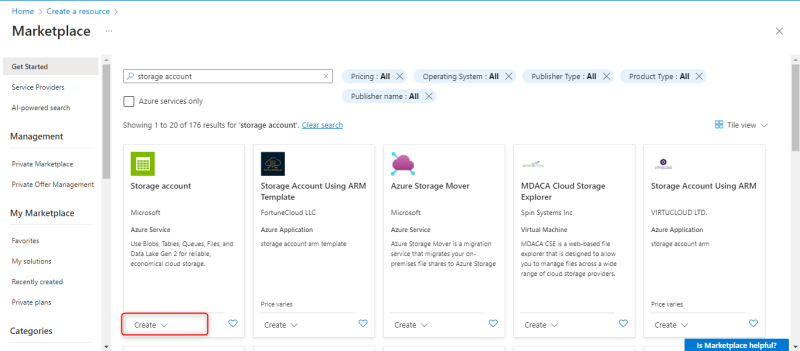
- In the project details, select the resource group you just created
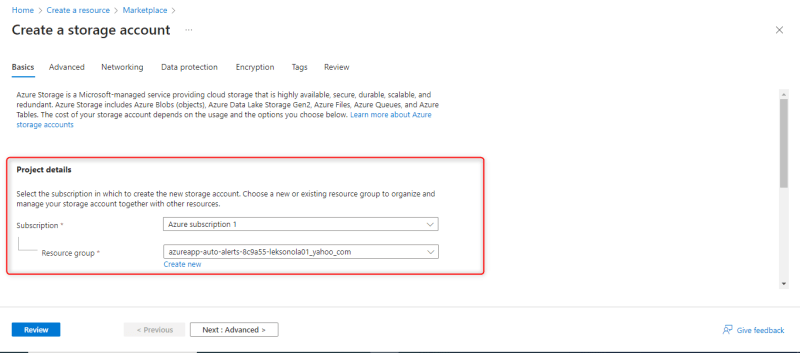
- Under the instance details, supply the name for your storage account.
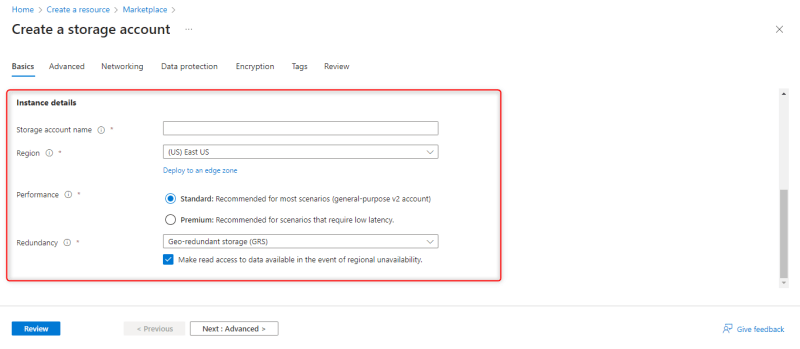
- Click review

- Once validation is passed, click create

- Wait for it to deploy

- After deployment is done, click go to resource

- After clicking go to resource, in the data management section, select redundancy blade
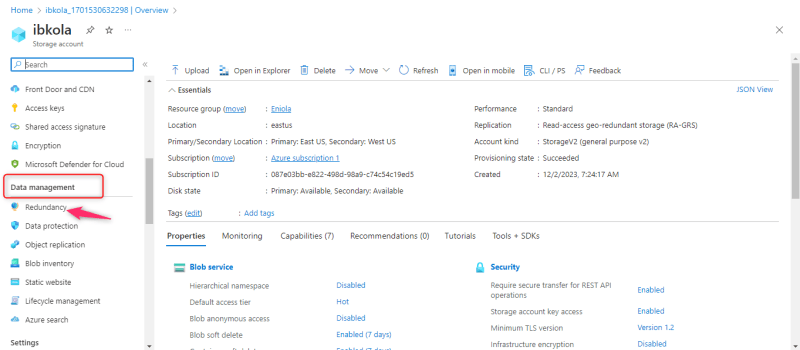
- Select Read -access Geo-redundant storage

- Click save
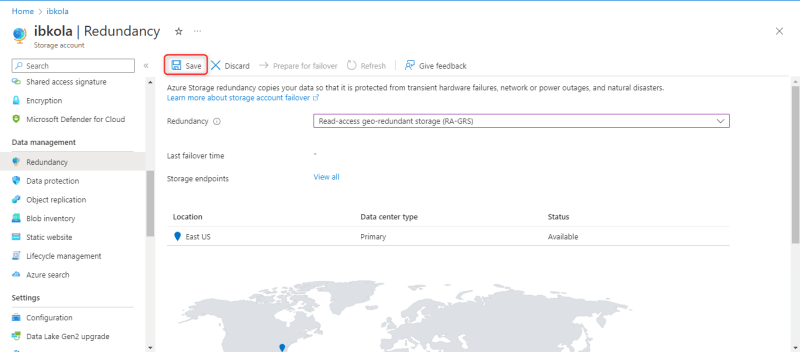
Enabling Allow blob anonymous access
Customers should not need to log in to obtain information on the public website.
- in the settings section, select configuration

- Enable allow blob anonymous access

Create a container for blob storage with anonymous read access.
- Select containers in the Data storage section
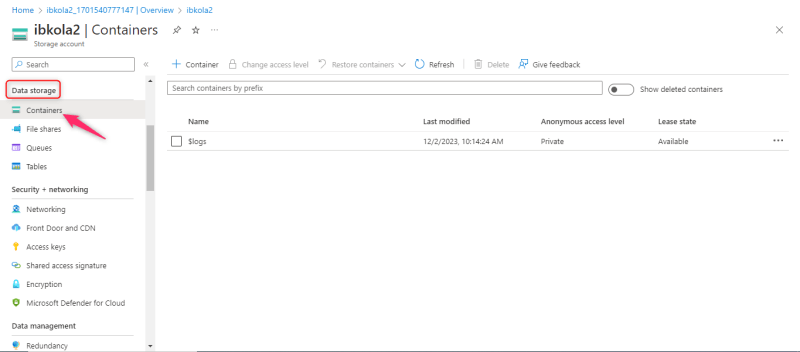
- Select + container

Clients ought to be able to see the pictures without requiring authentication. Set up read access to the public container blobs anonymously.
change access level to blob(anonymous read access for blobs only)

Testing the container for access.
- After changing the access level, click upload to send a file into the container

- Click browse a file to select a file to upload
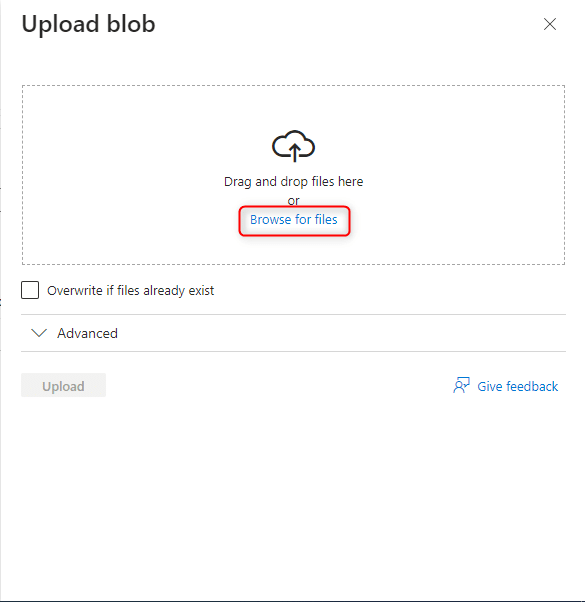
- After selecting a file, click upload
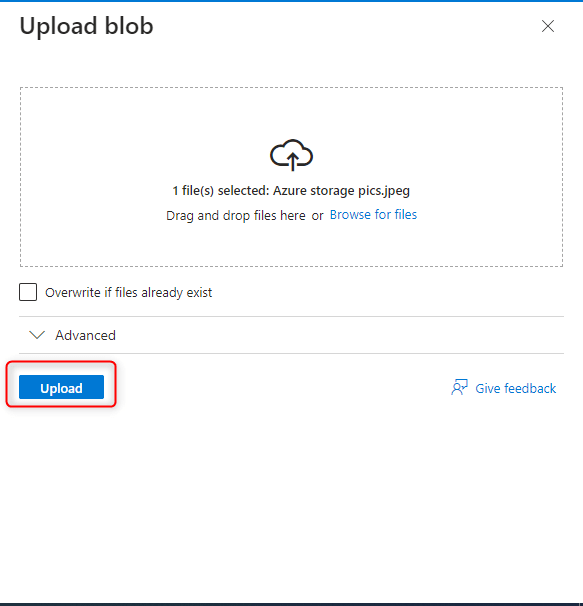
- Click on the uploaded file

- Copy the url in the overview tab

- Search the copied url in a new browser and it will be displayed in the browser
Setting up soft delete
- Return to the overview page and select blob soft delete in the blob service section
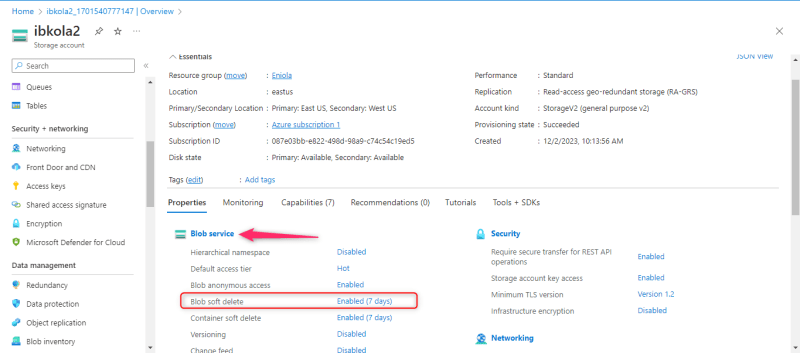
- Click Enabled(7 days) in front of soft delete, Tick enable soft delete for blobs and change the keep deleted blobs for (in days) to 21 days
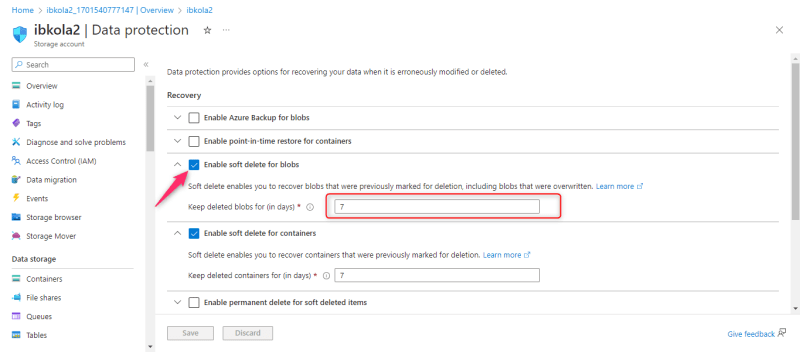
- Click save

Testing the configured soft delete
- Go to the container containing our uploaded file and delete the file

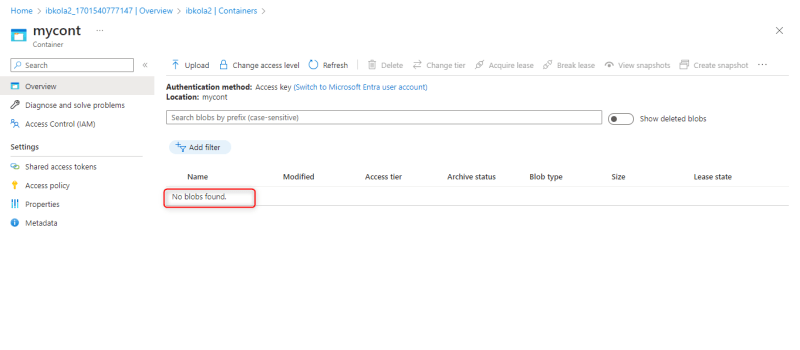
- Click on the slider beside show deleted blobs to show deleted files
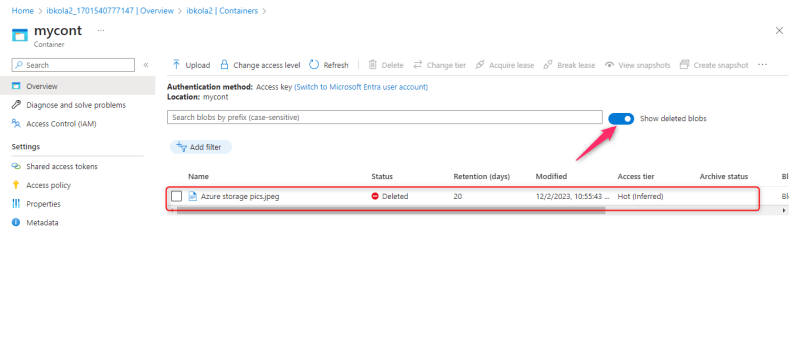
- Click the ellipses on the extreme right, select undelete to restore the deleted file

Setting up blob versioning
- Still under the overview page of the storage account, in the properties section under blob service, click Disabled in front of versioning to go to the versioning settings

- Tick enable versioning for blobs

- Click save

Testing the versioning set up
- Go to the container to upload another version of the initial uploaded file. This will overwrite the existing file.
- To get the list of the previous file, click the ellipses at the extreme right of the file and select view versions
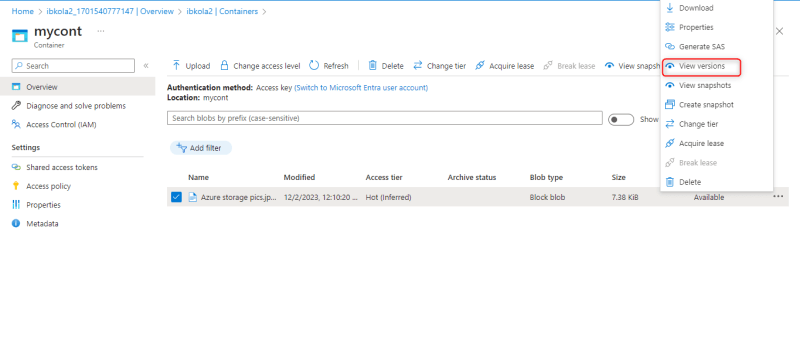
- This will bring a pane showing all the previous versions










Top comments (0)